ChatGPT group chats now lets your friends and AI join forces - here's how

ChatGPT’s group chat feature is a great new way to bring your friends, family, or co-workers into one shared conversation with the AI.
Launched globally in November 2025, it lets up to 20 people jump into the same chat, making it super easy to plan trips, brainstorm ideas, or work on projects together. Throughout your conversations, ChatGPT listens and chimes in when you ask it to; a bit like having a smart assistant right there with you and your pals, ready to help out anytime.
The best part? The bot keeps track of the conversation flow and joins in when it’s useful, making your teamwork smoother and more interactive. You can even tweak how ChatGPT behaves for each group.
Group chats are separate from your individual conversations as well, and your personal ChatGPT memory isn't shared with anyone else in the chat. It’s ideal for team projects, planning events, or just sharing ideas, with a little AI sprinkle on the side.
Step 1: Open the ChatGPT app
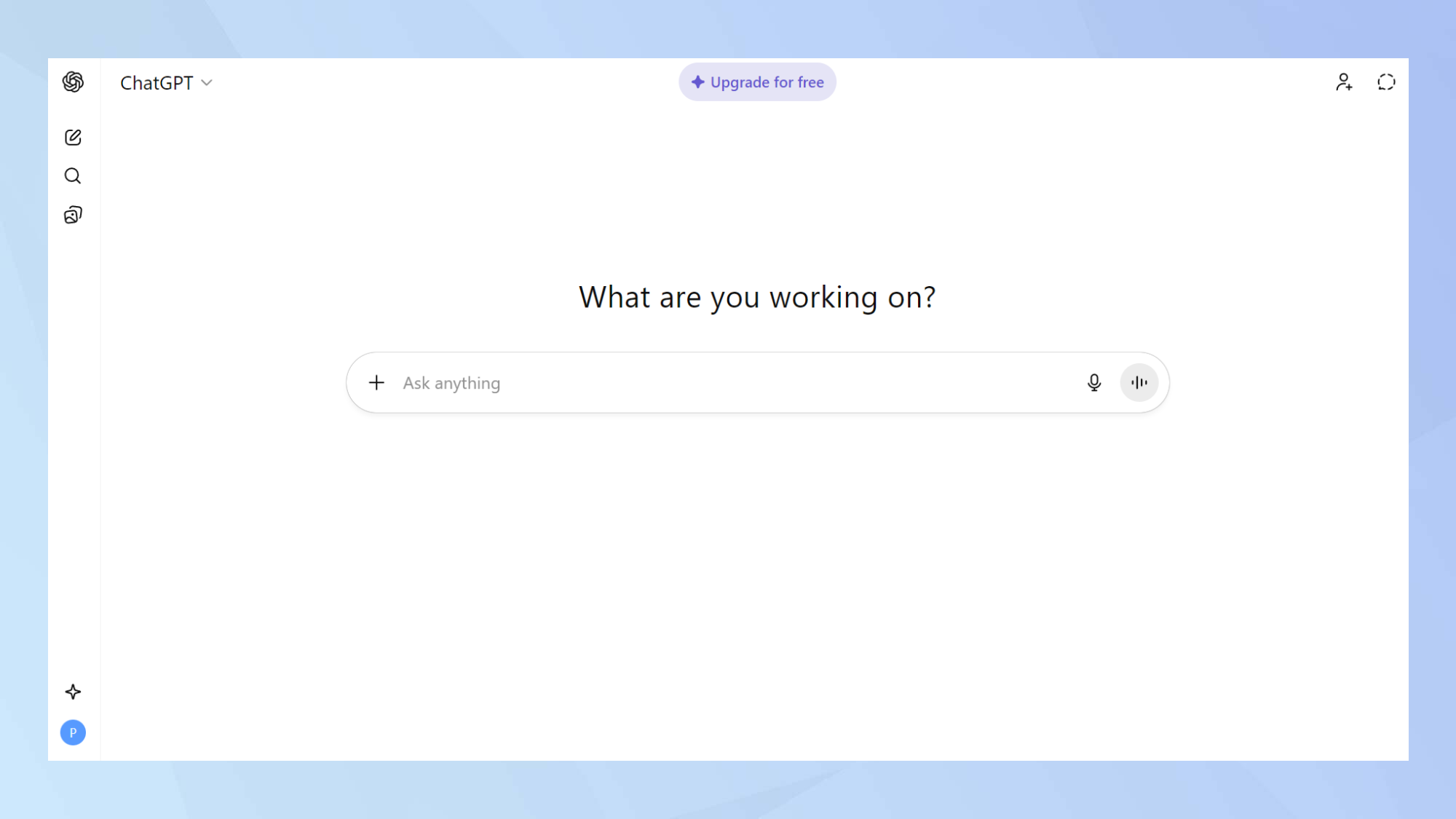
To get started, open ChatGPT to the welcome screen, ensuring you are logged in. You can access group chats via the web, iOS, or Android. If you don't already have an account, you'll need to make one, but both free and paid accounts can make and use these chats.
Step 2: Tap the people icon

Tap the people icon in the top‑right of a new chat to start a new group chat. This is next to the temporary chat icon.
When you hover over the icon, a bubble will appear saying 'Start a group chat.'
Step 3: Start the group chat
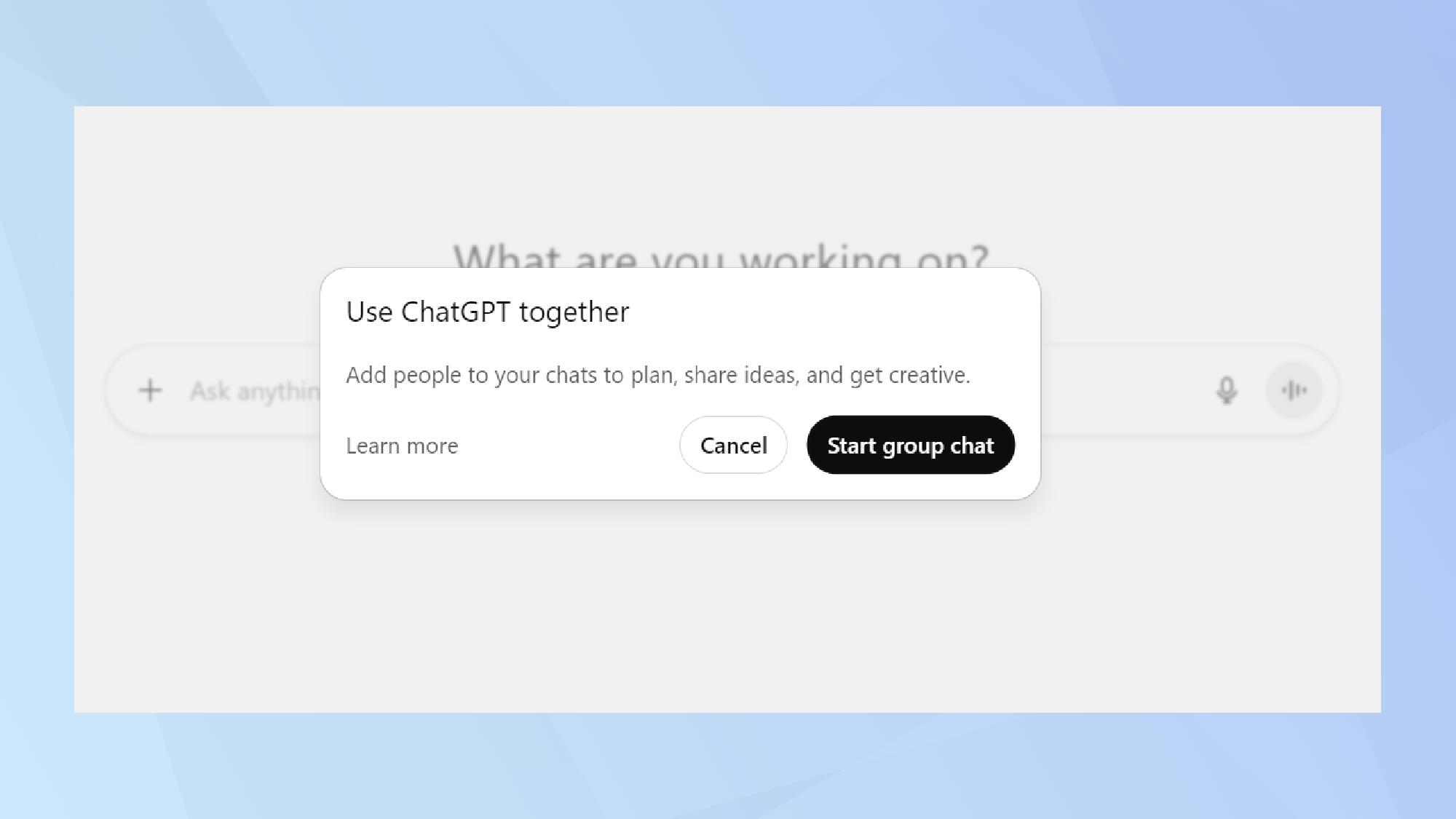
When you tap the icon, a new window will appear prompting you to Start group chat. Click this to begin.
Step 4: Send a group chat link

When you tap Start group chat, a new chat will be automatically created, where you can add others by sharing an invite link.
Step 5: Invite with link

After you click Copy link, your new group chat will appear blank and ready to invite your guests.
Step 6: How to interact with ChatGPT in a group chat
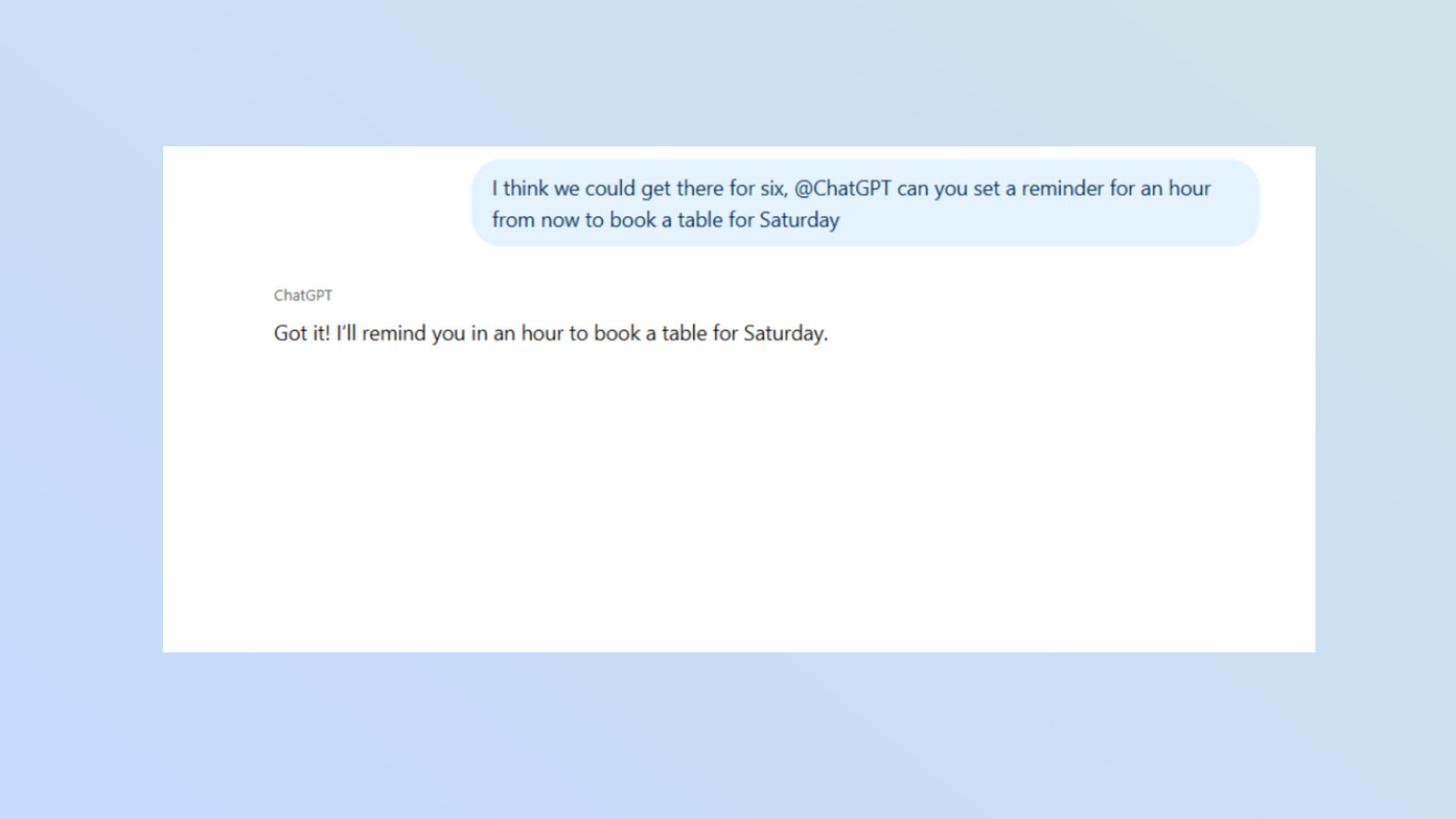
Once you're in a group chat, you can then interact with the other members, as well as ChatGPT.
The chatbot will get involved in one of two ways. You can either activate it by using @ChatGPT, alerting it that the question is being aimed at ChatGPT, or if a message to someone else needs ChatGPT, it will get involved.
For example, asking someone else what time a meeting was booked for, or what an effective route to a restaurant would be.
It operates like having a incredibly smart know-it-all in your group chat who will jump in when needed.
Bonus: Inviting people to existing chat
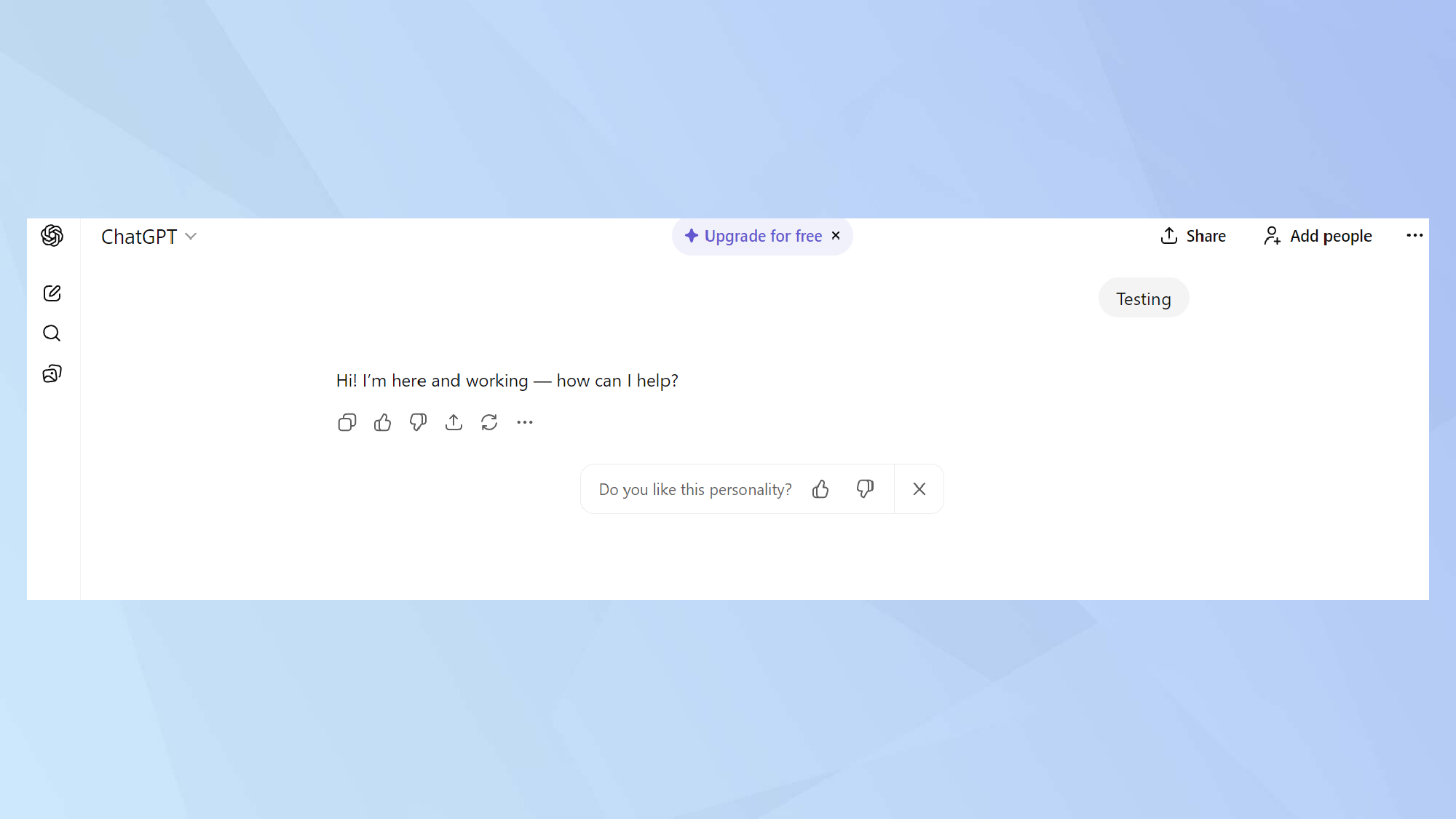
You can also invite guests to an existing chat.
Adding people to a current chat creates a copy of the original conversation as a new group chat.
Your original conversation stays separate and can be found under Your chats.
Simply open one of your existing chats, and click the Add people icon in the top-right. This will prompt the same steps as above.
Where to find your group chats
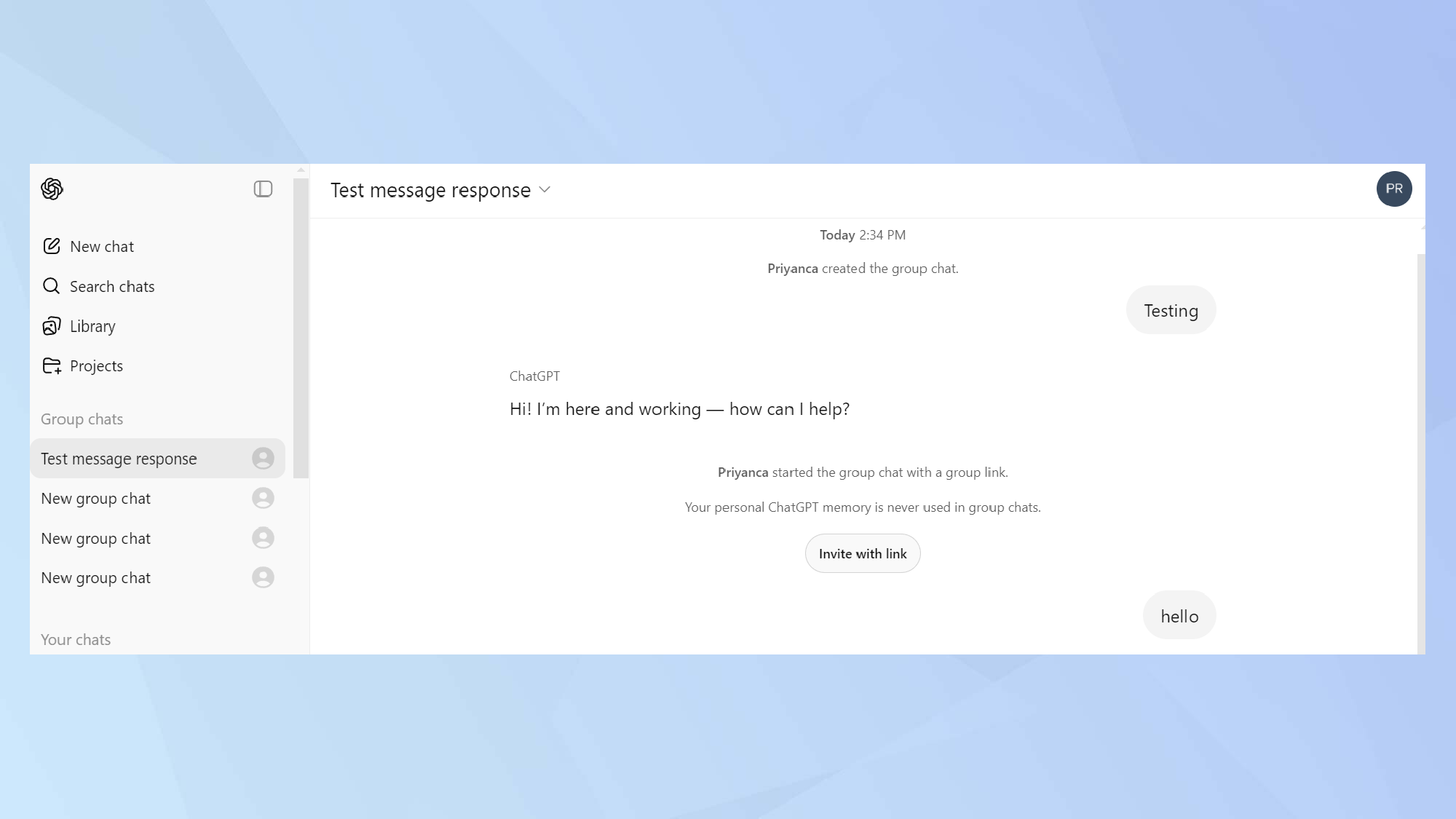
Once you've created a group chat, they will appear in the new Group chats section of the left sidebar so you can: Reopen recent groups, see who’s in each group, and manage settings and notifications.
ChatGPT's group chats tool make it easy to collaborate in real time with others, whether you're planning, brainstorming, or just sharing ideas.

Follow Tom's Guide on Google News and add us as a preferred source to get our up-to-date news, analysis, and reviews in your feeds.
More from Tom's Guide
- 'That’s it? It’s so simple': OpenAI's Sam Altman teases screenless device with Jony Ive
- I tried ChatGPT’s new shopping research feature — it found all of the best Black Friday deals in minutes
- I just tested ChatGPT Atlas vs. Chrome with Gemini 3.0 — and there's a clear winner
Get instant access to breaking news, the hottest reviews, great deals and helpful tips.
You must confirm your public display name before commenting
Please logout and then login again, you will then be prompted to enter your display name.










